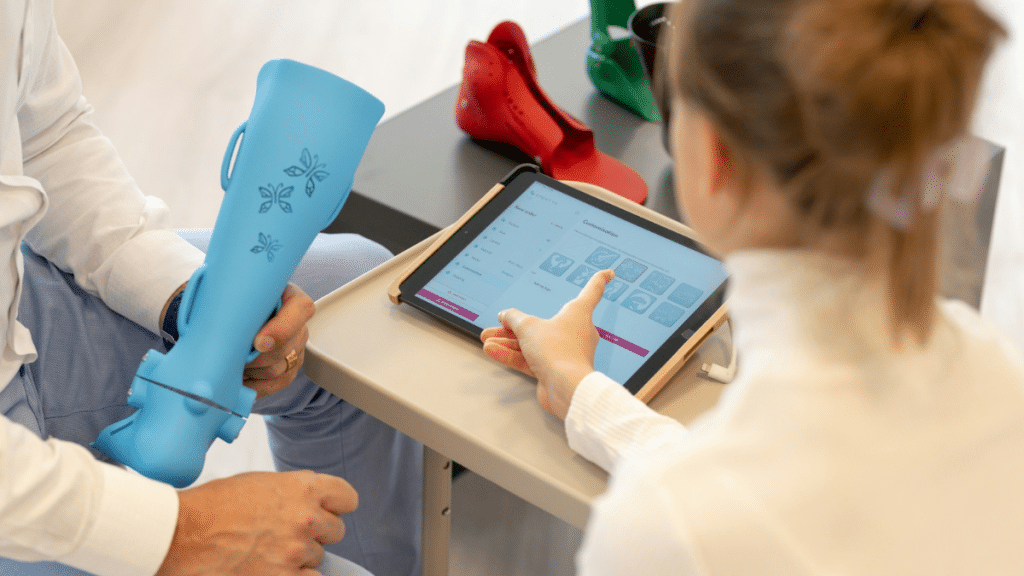Recovery from a single injury may be a challenging process. Managing the injury is one of the most delicate factors determining the outcome and quality of life following an accident. Over the last couple of decades, advancements in technology have revolutionized pain management practice, providing more individualized, effective, and available approaches than at any time in the past.
The technology of today enables patients to take greater control over pain management through digital monitoring, non-invasive therapy, and smart systems that adapt to specific needs. Modern tech can transform the way patients manage pain and during recovery. Solutions such as wearable devices, mobile apps, artificial intelligence and robotics can help patients manage an injury effectively.
1. Wearable Technology for Pain Relief
Wearable pain relief devices use non-invasive techniques to provide localized relief directly to the site of pain. The latest devices employ a variety of therapy modalities such as transcutaneous electrical nerve stimulation (TENS), controlled heat therapy, or unique vibration frequencies to disrupt pain signals and stimulate healing. Sophisticated wearables can be worn discreetly under clothing, allowing patients to receive continuous therapy throughout their daily activities.
Benefits of Wearable Devices
The most significant advantage of wearable devices is that they are convenient and portable. No longer do patients need to pay multiple visits to the clinic to receive pain-relief treatment as these devices can provide relief anywhere and whenever needed. Many wearables also track the use and levels of pain over time, collecting valuable data to help both the patient and clinicians monitor recovery and adjust treatment as needed.
2.Virtual Reality for Pain Relief
Virtual reality technology has been used as a successful therapy for pain treatment, particularly in patients suffering from severe acute pain or persistent chronic pain. As VR distracts patients with interesting virtual environments, it creates intense competition with pain signals for access to the brain’s receptors. These immersive environments can range from relaxing natural environments to interactive games specially designed for therapy.
The Science of VR Pain Relief
VR works by stimulating multiple sensory pathways simultaneously, essentially “flooding” the brain with other stimuli that reduce its ability to process pain signals. Clinical trials have established VR as having a significant impact in reducing the perceived level of pain during procedures like wound care for burns, post-surgical recovery, and management of chronic pain disorders.
3. Pain Monitoring and Management Using Mobile Technology
Smartphones and tablets with pain management and EMR software have changed patient tracking and reporting of pain experience. The devices allow patients to report pain severity, duration, and cause in real-time, creating complete diaries that reveal patterns lost with conventional reporting. The data provided gives health professionals with real information to institute more effective treatments.
Support for Self-Management and Behavioral Health
Mobile pain management systems may include educational content and behavioral health components that are part of complete recovery. These may be guided meditation lessons, breathing exercises or cognitive behavioral therapy modules that treat psychological aspects of pain. By adding medication reminders, physical therapy routines, and relaxation training, these systems help patients maintain consistent adherence to treatment plans.
4. Robotics and Exoskeletons in Pain Relief and Rehabilitation
Rehabilitation robotic systems provide precisely controlled, repetitive therapy sessions that complement traditional physical therapy techniques. The robotic systems instruct patients in therapeutic movements, avoiding exercises that could exacerbate pain or result in further injury. Robotic therapy can also turn rehabilitation exercises into games, improving patient participation and adherence to recovery procedures.
Exoskeletons for Pain Management
Exoskeleton robots are a breakthrough for patients that suffered a severe injury with mobility issues. Exoskeletons provide support to weak body areas, transferring body weight and reducing stress on injured joints or muscles. Through proper movement patterns, exoskeletons not only reduce transient pain but also assist in health healing and prevent compensatory movements that can lead to secondary pain issues.
The Future of Tech-Enabled Pain Management
As technology continues to advance, the incorporation of these new solutions into pain management protocols offers hopeful outcomes for healing from injury. These technologies provide symptom relief but also give patients greater control over their recovery, offer customized approaches based on unique needs, bridge gaps in care between doctor visits.
For those patients recovering from personal injuries, consulting with doctors about the integration of such technology devices into treatment plans could be life changing. It may enhance the success rate of pain relief and hasten the transition back to a regular and higher quality of life. Many personal injury lawyer currently work with medical personnel to ensure that their clients receive access to these new pain management technologies as part of their overall recovery and compensation package.
Embracing Innovation for Better Recovery Outcomes
For individuals undergoing painful experience of recuperating from injury, these technology-enabled approaches bring not just relief from pain but also greater control over the healing process. Combining these devices with the expertise of medical practitioners, patients can achieve a shorter recovery time, reduced dependence on medication and improved quality of life following therapy.
